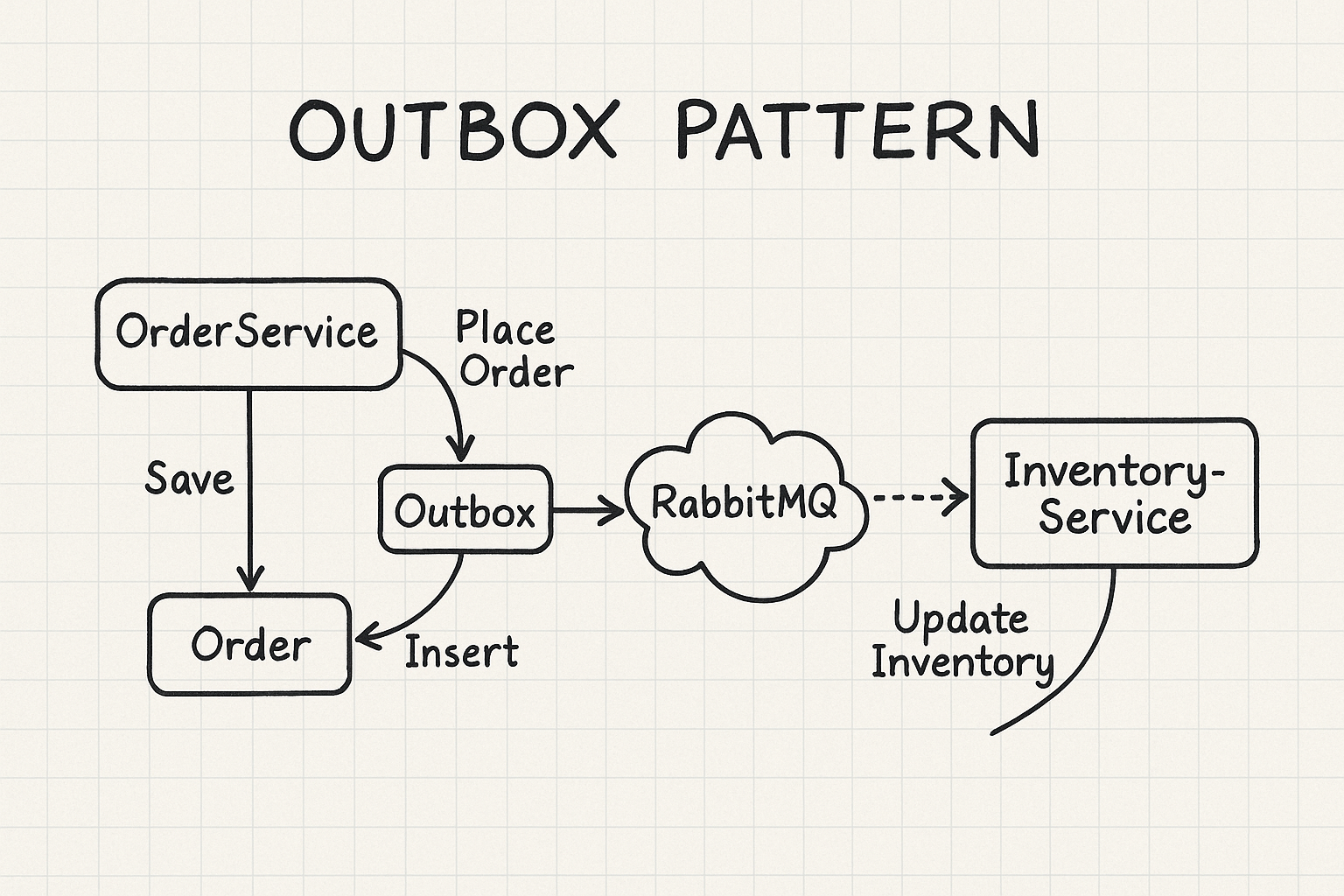Async Communication with the Outbox Pattern

Today, I want to take you through a story — a real-world scenario — where we struggled with async communication, and how something called the Outbox Pattern helped us out of the mess. If you’re dealing with microservices or distributed systems and are using tools like RabbitMQ or Kafka, you might just want to sit tight and read on.
The Backdrop
So, let’s set the context.
We had two services — let’s call them OrderService and InventoryService. Whenever a new order was placed, we had to update the inventory asynchronously. Seemed like a perfect job for a message queue. So, we set up RabbitMQ, fired messages from OrderService once the order was placed and committed to the database. Clean, right?
Well, not so fast.
The Problem
Imagine this:
The order gets saved in the DB, and right after that, a message is published to the RabbitMQ queue. But what if the app crashes between those two steps? Yep, the order is saved, but the message never goes out.
Now the InventoryService is completely blind to that order.
And the reverse can happen too — what if the message is sent, but the DB commit fails?
Now we’ve got an inventory update on something that never actually existed.
This is what we call a consistency nightmare in distributed systems.
So we needed a way to ensure either both happen or none happen.
Enter the Outbox Pattern
The idea is refreshingly simple:
Instead of directly sending a message to RabbitMQ, we store it in the same DB transaction where we save our business entity (say the order). This “outbox” is just a table — call it outbox_messages, event_log, whatever you want.
Here’s the flow:
- Order is saved in the DB.
- Message is saved to the outbox table in the same transaction.
- A background process (usually a worker or a cron) polls this table, picks up new messages, and publishes them to RabbitMQ.
- Once published, it either marks the message as sent or deletes it.
This ensures that messages are never lost and everything stays in sync.

Why This Worked So Well for Us
- We had guaranteed durability. If the DB commit happened, the message was there, even if the service crashed after.
- We could retry publishing without worrying about duplicating the business logic.
- Since it was DB-backed, it fit nicely with our observability tooling. We could query the outbox table anytime to debug.
- QA folks were happy because they could validate outgoing messages using DB queries (who knew!).
A Few Lessons We Learnt
- Don’t try to “just add async messaging” without thinking about consistency. You’ll pay for it.
- Always treat your messaging system as part of the data pipeline, not an afterthought.
- The Outbox Pattern isn’t a silver bullet, but in scenarios where eventual consistency is acceptable, it’s pretty close.
- And yes — keep your outbox publisher lightweight, retryable, and resilient to failures.
Final Thoughts
We often try to run before we walk when building distributed systems. Adding async messaging is cool, sure — but if you’re not careful, you’ll trip over the small stuff. Patterns like Outbox are boring, yet life-saving.
So next time you’re thinking about RabbitMQ and events flying all over, just pause and ask — what if something fails?
If the answer makes you uncomfortable, you probably need an Outbox.
Let me know if you’ve implemented something similar or faced weird issues around async communication. Would love to hear your story.
Until next time,
Keep Learning. Keep Shipping.

Member discussion